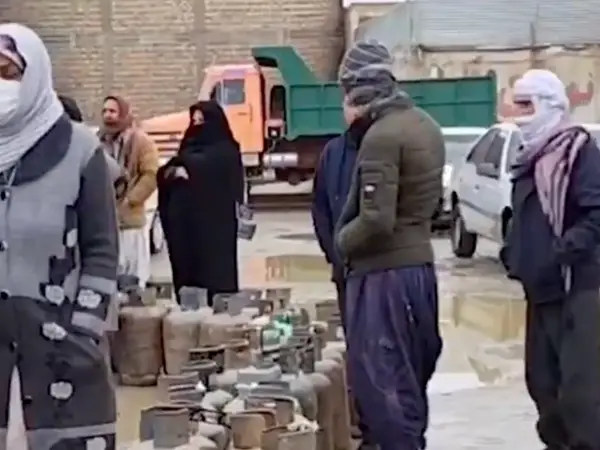Amid catastrophic energy shortages across Iran, kilometer-long queues of cars have been formed at gas stations in several cities while more oil industry workers stage strikes.
According to videos on social media, truckers in some cities such as Tabriz in northwestern Iran and Zahedan in southeastern are stranded around gas stations apparently due to a lack of diesel fuel and compressed natural gas (CNG).
Gas supplies to homes, which the government tried to protect during past cold season crunches, have also been interrupted in some regions. While offices and schools in Iran have been closed for days due to a serious natural gas shortage, long lines have also been formed in the cities where people use gas in capsules for their daily needs.
Amid natural gas shortage due to the government inability to invest in production, a new wave of strikes by oil and gas industry workers has kicked off in the country.
On Thursday, workers of the Qeshm oil terminal joined the strikes which have already started with gatherings in Ahvaz, Asaluyeh, Dehloran, Shiraz, Ilam, Bandar Lengeh and Aghajari in the south and southwest of Iran.
The Qeshm oil terminal is a major oil export terminal being developed in the Qeshm Island that lies along the strategically important trade route of the Strait of Hormuz, off the southern coast of Iran.
Fadahossein Maleki, the representative of Zahedan in the parliament, said Wednesday that "There is no gas supply in many areas of Sistan-Baluchistan province.” Even bottled gas and kerosene that should be given to the people is scarce, he added.
Moineddin Saeedi, representing Chabahar, in the underprivileged province said at the parliament Wednesday that "In August, the oil minister predicted a harsh winter in Europe... Now we have seen that this did not happen there and unfortunately it happened in our own country." He added that gas has become a "luxury commodity" and access to it has become a dream for many people.
Similar problems have also been reported in other parts of the country such as the central province of Esfahan (Isfahan), northern provinces of Mazandaran and Golestan, and northeastern Khorasan provinces.
While Islamic Republic officials predicted a bad winter in Europe, offices, organizations, schools, and universities were shut down in many parts of Iran.
With natural gas shortage, Iran resorted to burning mazut at power stations, which is an extremely polluting fuel compared with cleaner diesel.
Iran has failed to invest in its gas production sector, although it has the world’s second largest reserves, while with extremely cheap prices for consumers, usage has been increasing ever faster. The distribution network also needs upgrades as more than 25 percent of the gas is lost during transfer.
Iran's gas production and extraction capacity is limited to around 800 million cubic meters per day. According to the ministry of energy, about 650 million cubic meters are consumed by domestic, commercial, and administrative users, however, the data has changed a lot in different years and contradict international estimates. The international energy organizations say less than 40% of Iran's natural gas is consumed at homes, but the Islamic Republic is trying to blame the shortage of gas on home users.
